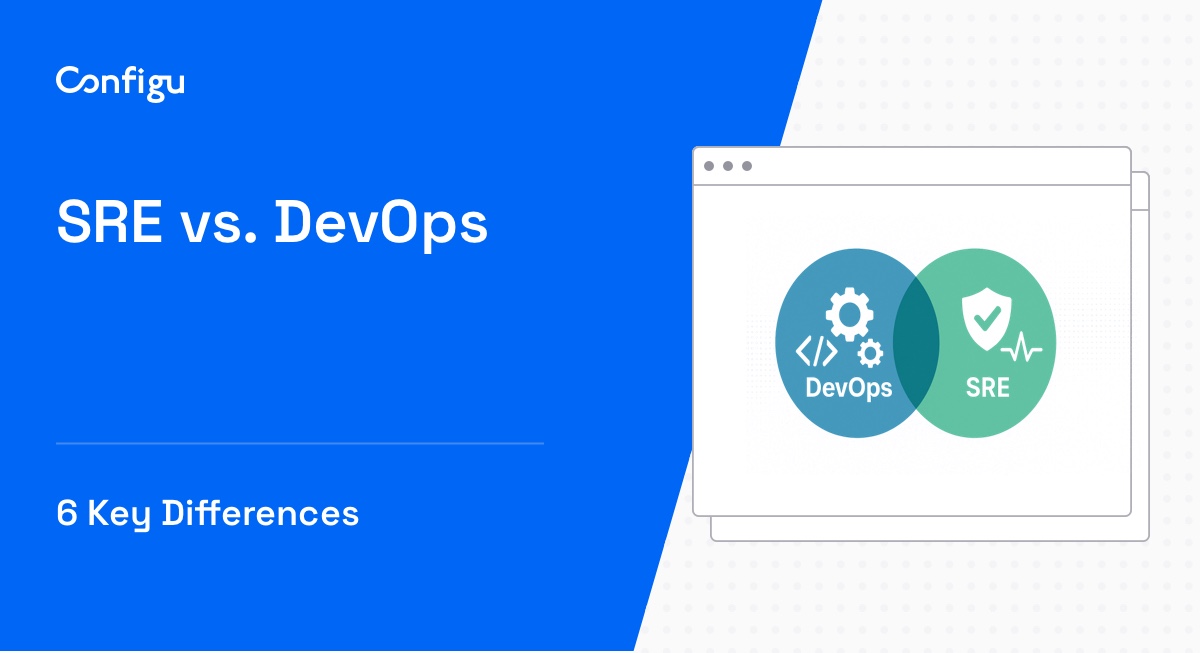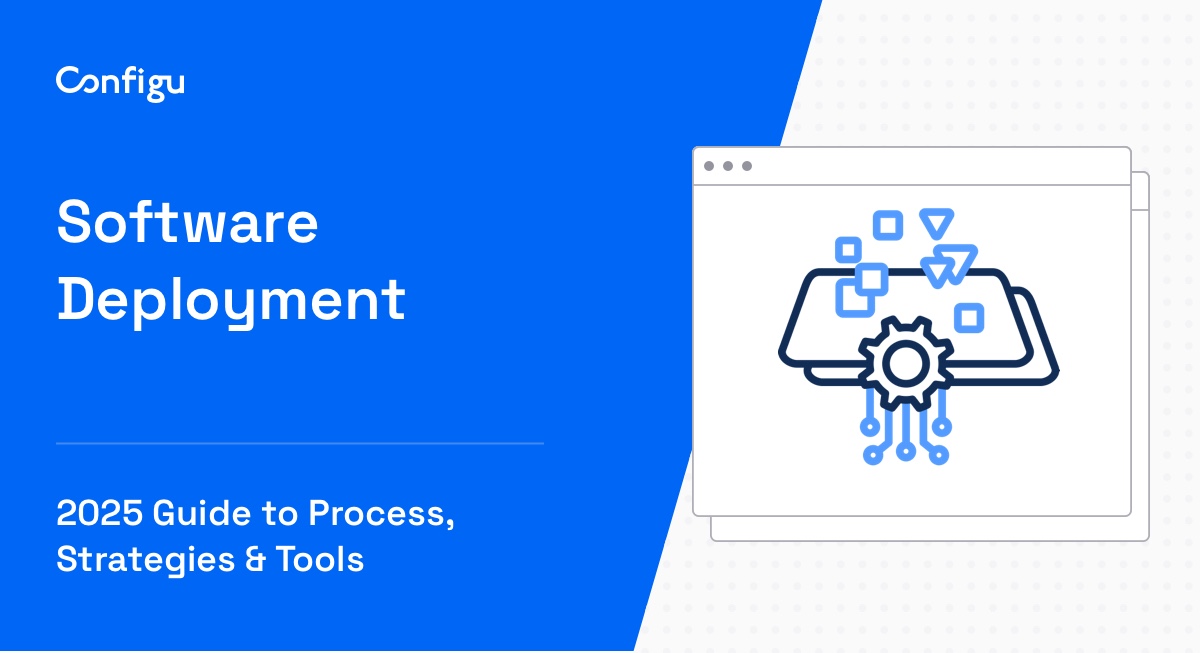What Is Secret Management?
Secret management is about controlling who has access to sensitive information in a software environment. A ‘secret’ is a piece of information that should be kept confidential, such as a username, password, or API key. Secret management ensures that only authorized users have access to sensitive data and that this data is protected against unauthorized access. The goal is to reduce the risk of data breaches and increase the security of your software development systems and production infrastructure.
The concept of secret management isn’t new. For years, organizations have been using password managers and encrypted databases to store sensitive data. However, with the rise of DevOps and cloud computing, the scale and complexity of secret management have increased dramatically, giving rise to dedicated secrets management technologies.
This is part of an extensive series of guides about cloud security.
In this article:
Why Is Secrets Management Important?
Here are a few of the key benefits of secrets management for organizations:
- Preventing data breaches: Data breaches can have severe consequences, including financial losses, reputational damage, and regulatory penalties. For example, if an attacker gains access to a database password, they can potentially access all the data within that database. By effectively managing secrets, organizations can significantly reduce the risk of a data breach, and gain visibility over the use of secrets.
- Enabling secure DevOps practices: In a DevOps environment, there is often a need to share secrets between different teams and tools. A secrets management solution can help by providing a secure way to store and distribute secrets. It can ensure that secrets are only accessible to the right people and tools, and that they are protected when in transit and at rest.
- Protection against unauthorized access: If an attacker can gain access to a secret, they can potentially gain access to sensitive systems, such as cloud services, servers, or networks. By managing secrets, organizations can ensure that only authorized users have access to these resources, and prevent unauthorized access through strong authentication, secret rotations, and revocation of access when it’s no longer needed.
- Compliance with regulatory standards: Many regulations and standards, such as the General Data Protection Regulation (GDPR) and the Payment Card Industry Data Security Standard (PCI DSS), require organizations to protect sensitive data, including secrets. By implementing a robust secrets management solution, organizations can demonstrate that they are taking the necessary steps to protect this data.
Related content: Configuration-as-Code
Types of Secrets in Computing
Passwords and Credentials
Passwords and credentials are used to authenticate users and grant access to various resources, such as databases, cloud services, and system components.
Passwords and access credentials are essential for day to day operation of computing systems, but can also be a significant vulnerability if not managed properly. They should be stored securely, rotated regularly, and only accessible to authorized users.
API Keys
API keys are used to authenticate applications and grant them access to various APIs. Like passwords and credentials, API keys can also be a significant vulnerability if not managed properly. Many APIs provide access to business critical applications or sensitive data, which would cause major damage if exposed.
A secrets management solution can provide a secure way to store and distribute API keys. It can ensure that API keys are only accessible to the right applications and that they are protected when in transit and at rest.
Encryption Keys
Encryption keys are used to encrypt and decrypt data, ensuring its confidentiality. They are a critical component of many security protocols and systems.
Managing encryption keys can be challenging, especially considering their importance and the potential consequences of them falling into the wrong hands. A secrets management solution can provide a secure way to store and manage encryption keys, ensuring their security and integrity.
Certificates and Tokens
Certificates and tokens are used for various purposes, including authenticating users, granting access to resources, and securing communications. Like encryption keys, they are critical, high risk assets that must be carefully protected. A secrets management solution can securely store and manage certificates and tokens across multiple teams and computing systems in an organization.
Environment Variables
Environment variables are configuration elements used to configure applications and control their behavior. Strictly speaking, environment variables are not secrets, but they are often used to store and manage secrets like access credentials.
Environment variables are used in almost every application and operating system, but they are typically not secure, because they are stored in plaintext and can be viewed by anyone with access to the runtime environment. A secrets management solution can provide a secure way to store and manage environment variables, ensuring that they are only accessible to the right applications and that they are protected when in transit and at rest.
Tips From the Expert
In my experience, here are tips that can help you better manage secrets securely and efficiently:
-
Use dynamic secrets for short-lived access Where possible, implement dynamic secrets that expire after a short period (e.g., HashiCorp Vault’s dynamic credentials). This limits the exposure window if a secret is compromised and reduces the need for manual rotation.
-
Audit access to secrets regularly Set up automated audits of secret access logs to detect unusual activity early. Combine this with real-time alerts for critical secrets to ensure any potential breach is flagged before it escalates.
-
Segment secrets per environment and service Isolate secrets by environment (e.g., dev, staging, prod) and service to limit the blast radius if one secret is compromised. Avoid sharing secrets across environments to minimize the risk of cross-environment security breaches.
-
Leverage hardware security modules (HSMs) for high-risk secrets For highly sensitive secrets (e.g., encryption keys or certificates), store them in dedicated hardware security modules (HSMs) for enhanced physical and logical protection. HSMs ensure that sensitive keys never leave the secure environment.
-
Encrypt secrets in transit and at rest Always ensure that secrets are encrypted both at rest and during transit. This adds an extra layer of protection, preventing attackers from accessing secrets if they intercept network traffic or gain unauthorized access to storage systems.
Common Use Cases for Secret Management
CI/CD Pipelines
Continuous Integration/Continuous Delivery (CI/CD) pipelines are the foundation of agile development practices. They often require secrets for tasks such as authenticating to source code repositories, deploying applications, and accessing third-party services.
It is crucial to manage secrets in CI/CD systems securely, to prevent unauthorized access to CI/CD pipelines and prevent supply chain attacks. Many CI/CD tools provide built-in secrets management features, but you should consider using dedicated secrets management solutions for added flexibility and security.
Cloud Service Authentication
Cloud services such as AWS, Azure, and GCP are especially vulnerable to attack because they are commonly accessed over public networks. Cloud services typically require secrets for authentication and authorization. These secrets, often in the form of API keys or service account credentials, allow applications to interact with cloud services programmatically. Managing these secrets securely is crucial to prevent unauthorized access to your cloud resources.
Database Credential Management
Database credentials are another common use case for secrets. These credentials allow applications and users to interact with databases. If not managed correctly, they can become a significant security vulnerability, leading to unauthorized access to sensitive data. You should employ secrets management best practices and tools to protect these credentials.
Kubernetes Secret Management
Kubernetes has become the de facto standard for container orchestration in the DevOps world. It leverages secrets to store and manage sensitive information such as passwords, OAuth tokens, and SSH keys.
Kubernetes provides a built-in secrets mechanism, which allows you to decouple sensitive content from pod specifications and avoid exposing it to applications and users. However, Kubernetes secrets are not encrypted by default and are stored as plaintext in the etcd configuration database. Therefore, additional measures, such as using a secrets management tool or enabling etcd encryption, should be employed to protect these secrets.
Learn more in our detailed guide to Kubernetes secrets types (coming soon)
Terraform Secret Management
Terraform, a popular tool in the Infrastructure as Code (IaC) paradigm, uses secrets to manage infrastructure resources securely. With Terraform, you can manage secrets as code, allowing you to version control and audit changes to your secrets. However, similar to Kubernetes, secrets are stored in plaintext by default in the Terraform state file. Therefore, it’s crucial to secure the state file using encryption and secure storage solutions. You should take similar measures to secure secrets when using other IaC systems like Puppet, Chef, or Pulumi.
Learn more in our detailed guide to secret manager terraform (coming soon)
Challenges in Secrets Management
Manual Sharing and Failure to Rotate Sensitive Data
One of the biggest challenges in Secrets Management is the manual sharing of secrets. It’s not uncommon for developers to share secrets via email, instant messaging, or even in code comments. This practice is highly risky as it increases the chances of secrets being exposed.
In addition, many businesses fail to rotate their secrets regularly. This is often due to a lack of understanding about the importance of rotation, or because it’s seen as a time-consuming task. However, regular rotation of secrets is crucial to reducing the risk of exposure.
Hardcoded or Embedded Credentials
Hardcoded or embedded credentials in applications or scripts are a common practice, particularly in legacy systems. This is a significant security risk as it exposes secrets to anyone who has access to the code.
Managing these hard-coded credentials is challenging, as it often requires extensive code changes. However, it’s a crucial part of secrets management that cannot be overlooked.
Lack of Awareness and Visibility
Many businesses lack awareness about the state of secrets in their software systems, and the significance of secrets to their overall security posture. Without a centralized system for managing secrets, it’s difficult to monitor who has access to what secrets, when they were last used, and whether they’re still needed. This lack of visibility makes it difficult to identify and respond to potential security threats.
Cloud Computing Privileges
As businesses move their operations to the cloud, they must also manage a new set of secrets related to cloud computing privileges. These secrets, which include access keys and tokens, are often targeted by cybercriminals due to the level of access they provide.
Managing these secrets can be complex, particularly in multi-cloud environments. Businesses must ensure that these secrets are securely stored and regularly rotated, and that access is tightly controlled.
Third-Party Accounts and Remote Access
Third-party accounts and remote access also pose a significant challenge in secrets management. Many businesses rely on third-party services, each of which requires its own set of secrets. Managing these secrets can be a logistical nightmare, particularly if they’re not centrally managed.
Remote access is another concern. As remote work becomes the norm, businesses must ensure that secrets are securely transmitted and stored, even when accessed from outside the corporate network.
What Are Secrets Management Tools?
Secrets management tools are specialized software solutions designed to securely store, manage, and control access to sensitive information such as passwords, API keys, and certificates. These tools play a crucial role in modern software development and IT operations by ensuring that secrets are handled in a secure, automated, and auditable manner.
Secret management tools typically offer the following capabilities:
- Secure storage: A centralized, encrypted repository for storing sensitive data. This prevents secrets from being scattered across multiple locations or embedded in code, which is a common security risk.
- Access control: Fine-grained control over who can access specific secrets and under what conditions. Access policies can be defined to ensure that only authorized individuals or systems have access to certain secrets. This is crucial for maintaining security and compliance in complex environments.
- Automation and integration: Secrets management tools can integrate with various other systems and automate the process of injecting secrets into applications, scripts, or CI/CD pipelines. This automation helps avoid manual errors and reduces the risk of secrets being exposed during the deployment or development process.
- Auditing and logging: Detailed audit logs that track access to and usage of secrets. This feature is essential for compliance with regulations and standards, as well as for detecting and investigating potential security incidents.
- Secret rotation and revocation: Automatic rotation of secrets, which is the practice of regularly changing secrets to reduce the risk of compromise. They can also facilitate the rapid revocation or change of secrets in response to a security breach.
These tools help organizations manage the increasing complexity of secret management in cloud-native, microservices-based, and distributed systems. By using secrets management tools, organizations can significantly reduce the risk of data breaches and maintain the integrity and confidentiality of sensitive information.
5 Best Practices for Effective Secrets Management
Here are a few best practices that will help you effectively manage secrets in your organization.
1. Use Automated Secret Management Systems
Manual management of secrets is fraught with risks. It’s easy to make mistakes, such as forgetting to delete a secret when it’s no longer needed or failing to update a secret when it’s changed. Most importantly, when manually managing secrets, they are typically not stored securely and access is not controlled.
Automated secrets management tools can alleviate these risks. They can automatically generate, distribute, and rotate secrets, ensuring that secrets are always up-to-date and protected from exposure and abuse.
2. Differentiate Between Secrets and Identifiers
Not all sensitive data is a secret. For instance, a username or an email address might be sensitive, but they are not secrets. They are identifiers. Secrets are those pieces of information that authenticate an identifier. Making this distinction is crucial because it helps you determine what needs to be protected.
For instance, while it’s important to protect an employee’s email address, it’s more critical to protect their password. The password is what authenticates the email address and grants the employee access to their account.
3. Rotate Secrets Frequently
Finally, rotate secrets frequently. Even with the best protection measures, there’s always a chance that secrets may get exposed. Regularly changing secrets reduces the window of opportunity for an attacker to use a compromised secret.
Rotating secrets is especially important for high-risk secrets, such as those that grant access to sensitive systems or data. However, it’s important to balance the frequency of rotation with the operational impact. Changing secrets too often can lead to disruptions or access issues.
4. Ensure You Only Grant Least Privilege
Limit the number of people who have access to secrets as much as possible. The principle of least privilege (PoLP) should be applied, where individuals are given the minimum levels of access necessary to perform their tasks. This reduces the chances of secrets falling into the wrong hands and being misused.
5. Detect Unauthorized Access
Despite your best efforts, there may be instances where unauthorized individuals gain access to your secrets. It’s crucial to have systems in place to detect such instances and respond to them promptly. Many secret management systems provide auditing and alerting features that can help teams detect unauthorized or unusual access patterns.
Any unusual activity, such as an unexpected increase in requests for a particular secret, should be investigated immediately. Vigilance is important to prevent severe consequences, such as data breaches or service disruptions.
Learn more in our detailed guide to GitHub secrets
Secret Management with Configu
Configu is a configuration management platform comprised of two main components:
Configu Orchestrator
As applications become more dynamic and distributed in microservices architectures, configurations are getting more fragmented. They are saved as raw text that is spread across multiple stores, databases, files, git repositories, and third-party tools (a typical company will have five to ten different stores).
The Configu Orchestrator, which is open-source software, is a powerful standalone tool designed to address this challenge by providing configuration orchestration along with Configuration-as-Code (CaC) approach.
Configu Cloud
Configu Cloud is the most innovative store purpose-built for configurations, including environment variables, secrets, and feature flags. It is built based on the Configu configuration-as-code (CaC) approach and can model configurations and wrap them with unique layers, providing collaboration capabilities, visibility into configuration workflows, and security and compliance standardization.
Unlike legacy tools, which treat configurations as unstructured data or key-value pairs, Configu is leading the way with a Configuration-as-Code approach. By modeling configurations, they are treated as first-class citizens in the developers’ code. This makes our solution more robust and reliable and also enables Configu to provide more capabilities, such as visualization, a testing framework, and security abilities.
See Additional Guides on Key Cloud Security Topics
Together with our content partners, we have authored in-depth guides on several other topics that can also be useful as you explore the world of cloud security.
What is MDR
Authored by Cynet
- What Is Managed Detection and Response? (MDR)
- EDR vs MDR: How They Compare and the XDR Connection
- MDR Solutions: Why They are Critical and How to Choose
AWS EKS
Authored by Spot
- Complete Guide to AWS EKS: Architecture, Pricing and Tips
- Understanding EKS Pricing and 5 Ways to Reduce Your Costs
- EKS Cluster: The Basics and Setting Up Your First Cluster
CNAPP
Authored by Tigera



